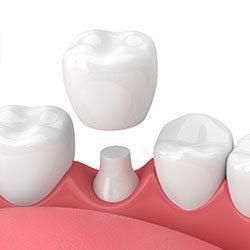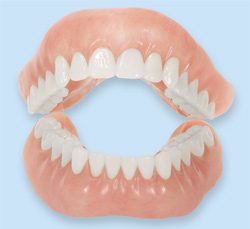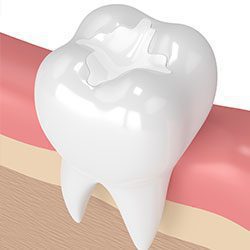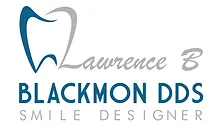Restorative Dentistry in Moreno Valley, CA

During your first dental examination with x-rays, you will be given the opportunity to discuss your dental health and goals. What is important to you, is priority for us. You will be presented with options to meet your dental goals. We offer many different services. But, you will be invited to join the decision-making process of what dental treatment will work best for you. In partnership with YOUR dentist, you will have a healthy smile and know you were a part of the process. Leaving the dental office feeling confident and informed of your dental plan is our goal.
Dental bridges may be used to replace missing teeth, help maintain the shape of your face, and alleviate stress on your bite. A bridge replaces missing teeth with artificial teeth, looks great, and literally bridges the gap where one or more teeth may have been. Dental bridges are made up of two or more crowns for the teeth on either side of the gap — two or more anchoring teeth and a false tooth or teeth in between. Bridges can be made from gold, alloys, porcelain, or a combination of these materials, and is bonded onto surrounding teeth for support.
The success of any dental bridge depends two things. First is home care or maintaining proper oral hygiene. Second is the foundation it is built on— the other teeth, gums, or bone to which it is attached. Therefore, it’s very important to keep your existing teeth, gums, and jaw healthy and strong.

Crowns are a restorative procedure used to improve your tooth’s shape or to strengthen a tooth. Crowns are most often used for teeth that are broken, worn, or have portions destroyed by tooth decay.
A crown is a “cap” cemented onto an existing tooth that usually covers the portion of your tooth above the gum line. In effect, the crown becomes your tooth’s new outer surface. Crowns can be made of porcelain, metal, or both. Porcelain crowns are most often preferred because they mimic the translucency of natural teeth and are very strong.
Crowns or onlays (partial crowns) are needed when there is insufficient tooth strength remaining to hold a filling. Unlike fillings, which apply the restorative material directly into your mouth, a crown is fabricated away from your mouth. Your crown is created in a lab from your unique tooth impression, which allows a dental laboratory technician to examine all aspects of your bite and jaw movements. Your crown is then sculpted just for you so that your bite and jaw movements function normally once the crown is placed.
Tooth loss causes a variety of problems that can affect eating and speaking habits as well as your overall health and appearance. Getting dental implants provides a permanent solution for a natural feeling and looking smile.
People are living longer than ever, and while regular brushing, flossing, and checkups allow many of us to maintain our natural smiles for a lifetime, sometimes our teeth just can’t keep up. If you’ve lost a tooth (or a few teeth) due to injury or disease, dental implants can rejuvenate both your smile and your oral health.
An implant is a synthetic tooth root in the shape of a post that is surgically placed into the jawbone. The “root” is usually made of titanium: the same material used in many replacement hips and knees, and a metal that is well-suited to pairing with human bone. A replacement tooth is then fixed to the post. The tooth can be either permanently attached or removable. Permanent teeth are more stable and feel more like natural teeth.
The ideal candidate for implants is a non-smoker who has good oral health, including a sufficient amount of bone in the jaw, and healthy gums with no sign of gum disease.
What Are Dental Implants?
It involve surgically placing a titanium implant into the jaw bone that acts as a new “root” for the tooth. Our Moreno Valley implant dentist then creates an acrylic tooth that caps the titanium tooth root. Like bridges, it can replace single or multiple missing teeth, but unlike bridges, It involve no reshaping of existing teeth, are as easy to clean as your natural tooth structure and have the appearance of a natural tooth erupting from the gum tissue. It is designed to stay within your jawbone, and the crown (false teeth) are crafted to match the color of your existing teeth, creating a natural and healthy-looking smile.
What Are the Benefits of Dental Implants?
Implants can do a lot for you. Some of their benefits include:
- Look and feel just like natural teeth
- Do not slide around like dentures might
- No additional cleaning methods necessary than that of your natural tooth
- Improves your overall health by restoring your ability to chew properly
- Minimal downtime and pain
- Improves speaking and digestion ability
- Maintains good jawbone health
Implants can improve your overall health, confidence, as well as your quality of life. If you are struggling with your current set of dentures or simply wish to replace your loose or missing teeth, dental implants could be the right option for you. Dental implants can restore the functionality of your bite. With dental implants, you can gain a full and natural-looking smile.
Post-Treatment Care
Consider your replacement teeth to be the same as natural teeth. They require the same daily brushing and flossing, and the same amount of regular checkups. Just like your natural teeth, the better you take care of your replacements, the longer they will last.
Are Dental Implants Right For You?
If you are missing a tooth or teeth or want a more stable and permanent solution than dentures, you may be a good candidate for implants. Call us to discuss dental implants and schedule a consult today.

Dentures are natural-looking replacement teeth that are removable. There are two types of dentures: full and partial. Full dentures are given to patients when all of the natural teeth have been removed. Partial dentures are attached to a metal frame that is connected to your natural teeth and are used to fill in where permanent teeth have been removed. Just like natural teeth, dentures need to be properly cared for. Use a gentle cleanser to brush your dentures, always keep them moist when they’re not in use, and be sure to keep your tongue and gums clean as well.

Traditional dental restoratives, or fillings, are most often made of silver amalgam. The strength and durability of this traditional dental material makes it useful for situations where restored teeth must withstand extreme forces that result from chewing, often in the back of the mouth.
Newer dental fillings include ceramic and plastic compounds that mimic the appearance of natural teeth. These compounds, often called composite resins, are usually used on the front teeth where a natural appearance is important, but they can also be used on the back teeth depending on the location and extent of the tooth decay.
There are two different kinds of fillings: direct and indirect. Direct fillings are fillings placed into a prepared cavity in a single visit. They include silver amalgam, glass ionomers, resin ionomers, and composite (resin) fillings. Indirect fillings generally require two or more visits. They include inlays, onlays, and veneers. They are used when a tooth has too much damage to support a filling but not enough to necessitate a crown.
FOR YOUR SAFETY AND COMFORT, WE OFFER OUR PATIENTS METAL FREE DENTISTRY
Certain materials traditionally used in dentistry can lead to health problems, and it is for this reason that we offer our patients metal free dentistry, preserving the beauty of their teeth while repairing their bite.
Composite Fillings
When plaque and bacteria erode tooth enamel, they can form cavities and areas of decay in the tooth structure. Left unchecked, this can destroy the sensitive nerves and root structure of teeth. Our composite resin fillings are placed in order to stop cavities and restore the bite surface. During the procedure, the decay and only a minimal amount of the original tooth structure will be removed. Composite resin fillings appear natural and are virtually undetectable in your smile. Even if you have previously placed metal fillings, they can be removed and replaced with composite tooth-colored fillings that are beautiful and metal free.
Porcelain Crowns
Unlike metal-based crowns of the past, our all-ceramic crowns are crafted using layers of porcelain that not only protect the remaining tooth structure, but look more realistic than past restorations. In much the same way that porcelain dental veneers are crafted, the porcelain is layered to create the most realistic ceramic restoration. Because of this careful process, light is able to move through the semi-translucent material in much the same way as natural teeth. Porcelain is also extremely strong and durable and will last for years to come
Metal-based crowns have also been known to erode along the gumline, exposing a dark line of metal at the base of the tooth. We use only metal-free crowns in our restorative dentistry procedures. Our patients often report that friends and family can’t tell their crowns from their natural teeth, and that they are confident their bite is stronger because of the porcelain crowns.
